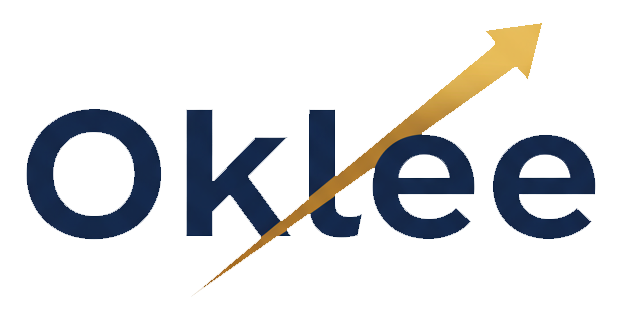Finance isn’t just for Wall Street anymore. In 2025, everyday finance includes budgeting apps, AI investing, crypto wallets, and even tokenized real estate.
Whether you’re trying to get out of debt or build long-term wealth, this finance guide for 2025 covers the essentials. It’s simple, clear, and packed with tools you can actually use.
1. Budgeting in 2025: Still the Foundation
No matter how much money you make, budgeting is the base of financial control.
Best tools in 2025:
- YNAB (You Need A Budget): Great for goal-based planning
- Monarch Money: AI-powered insights + account linking
- Goodbudget: Simple envelope-style app for beginners
Key tips:
- Use the 50/30/20 rule (or tweak it for your lifestyle)
- Automate fixed bills + savings
- Track “invisible spending” like subscriptions or small online purchases
Pro Tip: Set a “money check-in” once a week. Just 10 minutes can keep your budget on track.
Keyword tie-in: finance, finance guide
2. Saving Money: New Strategies That Work
Interest rates are higher in 2025, which is good for savers.
Smart ways to save this year:
- High-yield savings accounts (4%+ APY is common now)
- Cash-back apps and cards (look for 2%–5%)
- Round-up investing apps that save spare change into ETFs
- CD ladders if you want stable returns
Start with a simple rule: Save 10–15% of your income—no matter how small.
3. Credit and Debt: How to Stay Ahead
Credit card interest is brutal in 2025. The average APR is over 22%. So if you’re carrying balances, it’s time to make a move.
Action plan:
- Focus on paying off high-interest debt first (avalanche method)
- Consider balance transfer cards or debt consolidation loans
- Track your credit score with free tools like Credit Karma
- Avoid buy-now-pay-later services unless you pay off fast
Rule of thumb: Don’t spend tomorrow’s money unless you already have it.
4. Investing in 2025: What’s Changed
This is where things get interesting. In 2025, investing includes:
- Traditional assets: stocks, bonds, ETFs
- Alternative assets: crypto, real estate tokens, AI startups
- Automated platforms: robo-advisors, fractional investing apps
Core investing principles still apply:
- Start early
- Be consistent
- Diversify
- Think long-term (minimum 3–5 years)
Best platforms in 2025:
- Public: Easy for beginners, social investing features
- FinancePathways.com: Curated fractional investing in stocks and real estate
- Wealthfront / Betterment: Simple automated portfolios
- Coinbase / Kraken: For digital assets
Keyword tie-in: finance 2025, finance guide
5. Retirement Planning: Not Just for the 50+ Crowd
Retirement isn’t about age—it’s about options.
If you want freedom later, start now.
2025 options:
- Roth IRA: Tax-free growth (great for young investors)
- 401(k): Use it if your employer offers a match
- Solo 401(k) or SEP IRA if you’re self-employed
- Brokerage account: Flexible investing if you’ve maxed the rest
Pro Tip: Use a calculator to reverse-engineer your number. How much do you need monthly? Multiply by 25 (basic FIRE rule).
6. Digital Finance: What’s New This Year
Finance in 2025 is more digital than ever.
Big trends:
- AI-powered investing (like Richify.ai)
- Neobanks replacing traditional banks
- Crypto for stable savings and payments
- DeFi lending platforms for small businesses
But don’t dive in blindly. Stick to regulated platforms, watch out for scams, and always protect your private keys in crypto.
7. Financial Literacy: What Everyone Should Understand
If you learn just a few finance concepts, make it these:
| Concept | Why It Matters |
|---|---|
| Compound interest | It’s how your money grows exponentially |
| Inflation | You need your savings to outpace it |
| Risk vs reward | High returns come with volatility |
| Diversification | Don’t put all your eggs in one basket |
| Cash flow | Income minus expenses = control |
These are timeless—even in a tech-heavy world.
8. Common Mistakes to Avoid
🚫 Waiting too long to start saving
🚫 Spending every raise you get (lifestyle creep)
🚫 Only investing in what’s trending
🚫 Thinking you need a lot of money to begin
🚫 Not having an emergency fund
9. How to Build a 2025 Finance Plan (In 15 Minutes)
Here’s a quick checklist:
- Track your spending for 30 days
- Set a monthly budget
- Open a high-yield savings account
- Pay down high-interest debt
- Start investing (even with $10)
- Set 1 short-term and 1 long-term money goal
- Schedule a monthly money review
This one page of habits will serve you for years.

Final Thoughts
Finance in 2025 is easier than ever to access, but harder than ever to filter. There’s noise, hype, and too many “expert” opinions online.
Stick to the basics:
Spend less than you earn. Save every month. Invest for the long haul.
And keep learning as tools and markets evolve.
Want more no-fluff financial guides?
Subscribe to oklee.online for weekly breakdowns of budgeting tools, investment trends, and smart money moves—written for real people, not financial insiders.



